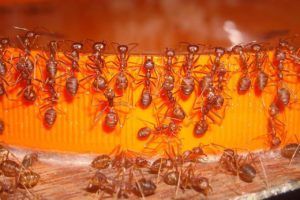This website uses affiliate links. If you purchase a product or service after clicking a link on this site – we may earn a commission (at no additional cost to you). As an Amazon Associate, we earn from qualifying purchases.
Ants are social insects that live in colonies with one queen and multiple workers. They feed on insects, plants, and fruit and their colonies can be found anywhere from the arctic circle to the desert.
Ants have been around since about 140 million years ago and there are about 20,000 different species. They are one of the most successful species on earth and can be found on every continent except Antarctica.
Ants can carry up to 20 times their own weight- meaning they are stronger than any animal on earth. Ants also have the largest brains of any insect. Ants can survive falls from significant heights- they can actually survive the impact of a fall from a tree that is 60 feet high.
These are just a few of the strange and amazing facts about ants that we’re going to share in this article. Keep reading and you’ll learn some really cool things about one of the world’s most magnificent creatures.
The Largest Ant Colony Ever Found Was 3,750 Miles Wide
The largest ant colony ever found was discovered in Argentina in the year 2000. The Argentine Ant is one of the most invasive species of ants in the world because they can live without water and they can easily travel long distances by stowing away on ships or cars.
The largest colony ever discovered was spread across Europe, Japan and the USA. Originally thought to be 3 separate super-colonies, it was found that the ants in each area were actually related. The ants all belonged to one species, the Argentine ant, and the colony grew so large as the ants within it refused to “fight” each other for survival. This particular ant is known for destroying large amounts of crops and native animals in the countries they colonise. The part of the colony located in Europe stretches some 3,750 miles!
https://facts.net/ant-facts/
An Average Colony Has 100,000 Ants While A Supercolony Can Reach More Than 100 Million Ants
Normal ant colonies of around 100,000-500,000 ants would be quite common, However, there exist supercolonies and they can contain up to 350 millions of ants. These supercolonies have tunnels and underground passages that link each nests creating a combined network of up to 45,000 colonies and 1 million queens.

20% To 40% Of The Ants In A Colony Do Absolutely Nothing
Researchers reported that a significant number of worker ants in an ant colony, about 20% – 40%, spend the vast majority of their time doing absolutely nothing. It was later discovered that the less active ants ‘take over’ jobs when there’s a labor force gap in the colony.
Back then, entomologist Daniel Charbonneau from the University of Arizona made the discovery that, despite how busy and industrious ant colonies seem to be, their general blur of movement masks a stunning truth: some 40 percent of the workforce are actually inactive slackers.
https://www.sciencealert.com/
Ants Shift 50 Tons Of Soil per 1 Square Mile
Ants may be tiny but these creatures transport large amounts of soil in their colonies every year. An estimated 50 tons of soil is shifted by ants per 1 square mile of land yearly. That is equivalent to 25 elephants! This is an amazing feat for such small creatures.
Ants move an estimated 50 tons of soil per year in one square mile
“Ants are the main turners of the soil – more important than earthworms” Edward O Wilson, sociobiologist at Harvard University and the world’s leading authority on social insects.
https://antark.net/
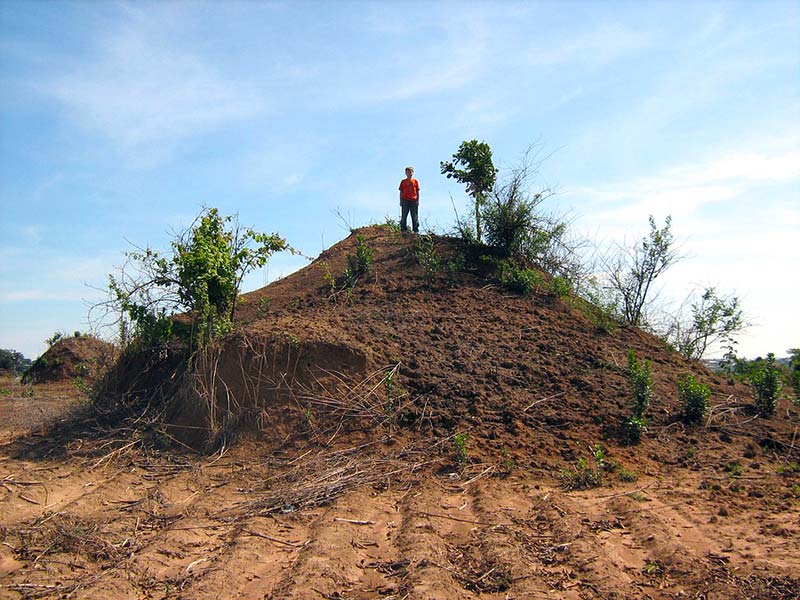
Ants Outnumber Humans By A Factor Of 1.4 Million
The population of ants is way more than human population. The human population is currently 7.6 billion and the ant population is 10,000 trillion. They outnumber humans by a factor of 1.4 million. That means that for every human, there are 1.4 million ants on Earth.
The Deepest Ant Nest Go As Far As 4 Meters Underground
The “Messor aciculatus” ants of Japan build the deepest ant nest in the world. They make nests which go over 4 meters deep and contain many small chambers, mostly filled with grass seeds on which they feed on. Further down under the surface, there is a chamber for the queen ant.
This species nests in bare areas near standing grasses and in open grasslands. Its nests open directly at the ground surface. Underground there is a nearly vertical shaft and many chambers; total nest depth may be up to 4 meters. In Japan, this species is known to be winter-active (Hosoishi et al., 2019) and in autumn workers collect grass seeds.
https://www.antwiki.org/
Ants Can Usually Wander Up To 300 Feet From Their Colony
Ants can travel for up to 300 feet away from their colony. This is because they are looking for food, water, or a new home. Ants often walk more than 2 miles to find food! This is how workers bring back the goods that the colony needs.
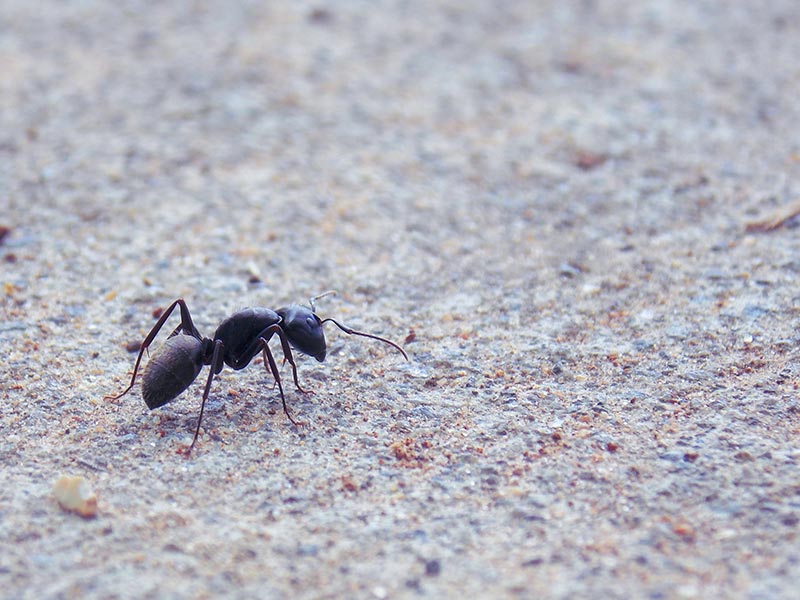
The Longest Ant Column Formed Is 3 Feet x 328 Feet
The nomadic Driver Ants in Central Africa form the biggest ant column which is 3 feet and 3 inches wide and 328 feet long. The column is flanked by bigger ant soldiers to protect ant workers when they are on the move during the day. They disperse during the night to build a temporary nest using their own bodies. The nest is for their queen.
Army ants in the genus Eciton, from Central and South America, and driver ants in the genus Dorylus, from Africa, have a reputation for travelling in highly organized columns. These can be up to 100 m (328 ft) long and over 1 m (3 ft 4 in) wide and may contain as many as 600,000 individuals which frequently take several hours to pass one spot.
https://www.guinnessworldrecords.com/
53°C Is The Highest Temperature An Ant Can Tolerate
The Cataglyphis bombycina or also known as the “Silver Ant of the Sahara” is a highly thermotolerant ant specie that can withstand a body temperature of around 53°C. Found on the Arabian Peninsula of the Sahara and Sinai deserts, this desert ant can go out of its nest and forage even in the mid-day heat of 70°C.
During many years of working with desert ants, Wehner discovered that Saharan silver ants forage in the desert in the full midday sun when surface temperatures reach up to 70 C (158 F), and must keep their body temperature below their critical thermal maximum of 53.6 C (128.48 F) most of the time.
https://www.washington.edu/
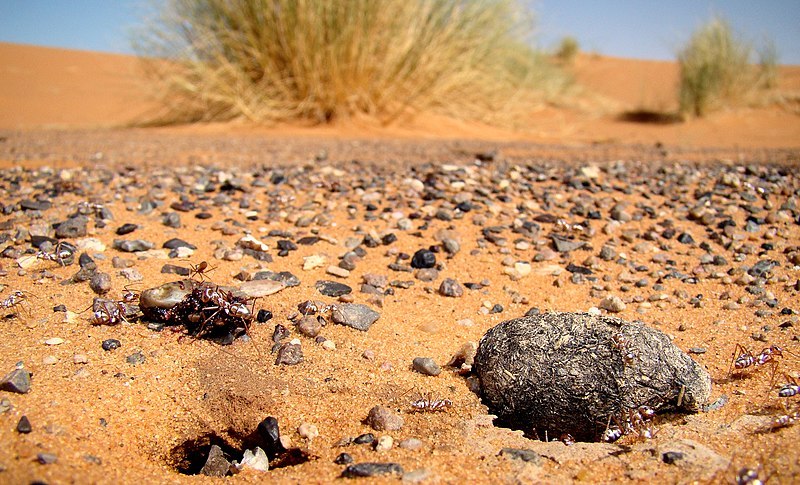
Queen Ants Can Live Up To 30 Years
The Queen ant can live up to 30 years in the wild, longer than the lifespan of ant workers which typically lives anywhere from 1 to 3 years. This is related to her diet, as she eats a variety of different foods, as well as her big role as the mother of all the other ants in that colony.
A Queen Ant Can Produce 800 Eggs In 1 Day
The queen ant is the only ant that has the ability to lay eggs. Eggs are laid during the reproductive season as worker ants feed their queen. The queen can produce up to 800 eggs per day but only a few of those eggs will become queens. In her lifetime, a queen ant can lay up to 3 million eggs.
The Largest Ant Queen Has A Wingspan Of 6 Inches
Titanomyrma giganteum is the largest ant species that ever lived on earth. When a 50 million-year-old fossil of its winged queen was discovered, it was found that the queens grew to up to 2.4 inches in length with a wingspan of about 5.9 inches. That’s almost the size of a hummingbird!

Ants Can Hold Their Breath For 24 Hours
Ants breathe through tiny holes in their exoskeletons called spiracles. These tiny holes in their exoskeletons allow them enough oxygen to freely move and survive without losing too much oxygen. A single ant can go up to 24 hours without needing to breathe, and this goes on even underwater.
Sometimes, in cases where ants appear to have drowned in water, they’ve miraculously come back to life – though they were never really dead in the first place. If they fall into water, and enough of it evaporates over time, they can start to absorb oxygen through their spiracles and revive. They can survive like this for up to 24 hours.
https://facts.net/
In Less Than 2 Minutes, Ants Can Build A Life Raft Using Their Own Bodies
Ants are quick to action to build life rafts in times of need. A new study has found that when water levels get too high, the ant’s legs and mouths link together, weaving a type of fabric. This process can take less than 2 minutes and can save an entire colony from being flooded.
When waters start to flood a fire ant colony, they take evasive action. Worker ants link legs and mouths together, weaving a raft in a process that can take less than two minutes.
https://www.nationalgeographic.com/

A Swarm Of Army Ants Contain 200,000 Workers
These swarms can cover more than 1500 square meters in a single day and can reach up to 15 meters wide. They only move at 0.2 meters every minute, so they’re relatively slow, but they often outnumber honeybees and are capable of killing plants in large swathes.
The World’s Largest Ant Is 2.4 Inches
The world’s largest ant is the Dorylus Fulvus or commonly called Driver Ant, Safari Ant or Siafu. The Queen Driver Ant can grow up to 2.4 inches in length, making it the largest ant in the world. Most driver ants are found in the Central and Eastern African region.
The World’s Smallest Ant Measures About 0.8 mm
The smallest known ant is a tiny worker of the species Carebara brunii that lives in Sri Lanka. As small as a speck of dust, it measures only about 0.8 mm long and is as thick as a regular credit card. The Carebara brunii is about 45 times smaller than the world’s largest ant.
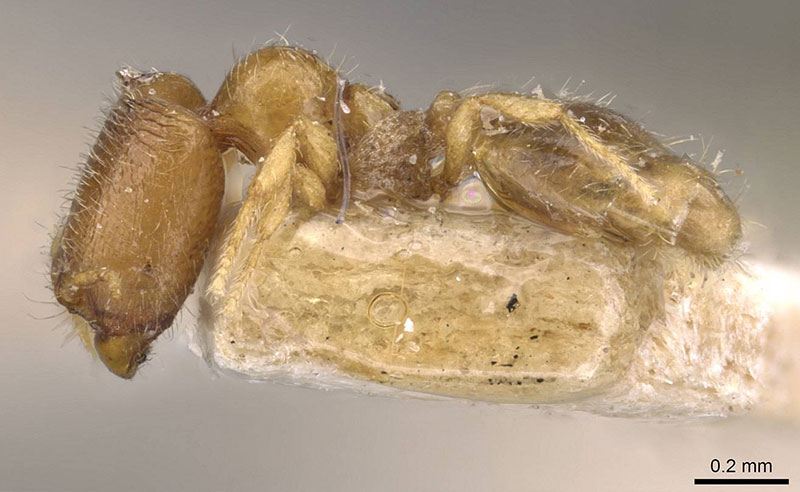
Why Ants Must Travel 40 Centimeters In 2 Minutes
Ants use a range of small chemicals called Pheromones to communicate. They deposit pheromones chemical trail to guide other ants to the food source. The succeeding ant travels about 40 cm in 2 minutes to reach the marked trail and add its own pheromone to reinforce the trail. This is because the short-lived pheromone chemical will evaporate beyond detection after 2 minutes.
The Fastest Ant Travels At A Speed Of 3.6 Kilometers Per Hour
The fastest ant alive is the Saharan Silver Ant. These desert dwelling ants can travel a distance 108 times its own body length per second. They have an impressive speed of 3.6 kilometers per hour using only 4 of their 6 legs at full velocity.
To see how those shortish legs can run through hell, Pfeffer set up an outdoor open-topped metal runway dusted with sand. She then offered a free lunch for ants. “They love mealworms,” she says. As ants rushed along the runway, Pfeffer got high-speed film of the step details. The shorter legs compensate by packing more strides into each second, up to 47 for the silver ants running at top speed versus 36 for their taller relatives, the team reports October 16 in the Journal of Experimental Biology. Pfeffer clocked speeds as high as 855 millimeters per second. That’s 108 times a silver ant’s body length in a second.
https://www.sciencenews.org/
Ants Hold The Record For The Fastest Movement At 140 mph
The trap jaw ant has long been thought to have the fastest animal snap in the animal kingdom. Recent research by engineers at Stanford University has found that these ants can close its jaws at a record-setting speed of 140 miles per hour. That’s faster than any other animal in the world, 2300 times faster than the blink of an eye.
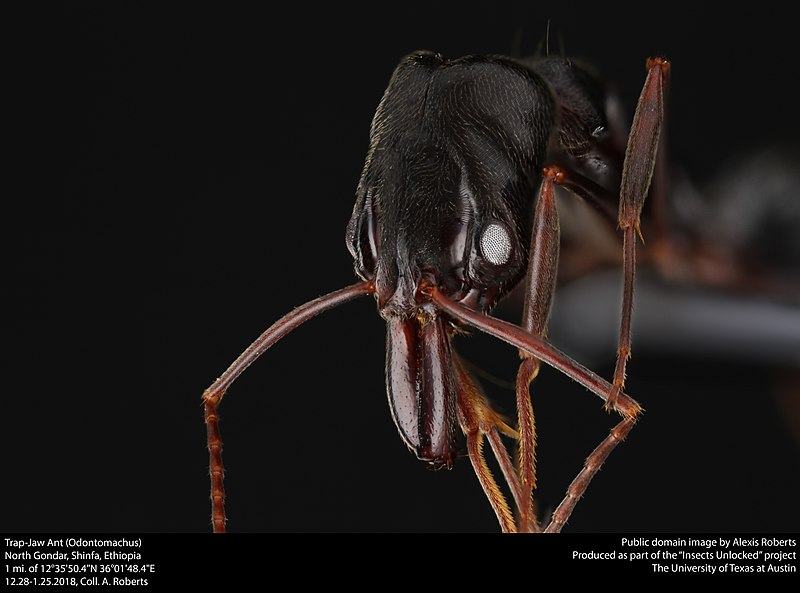
Ant Can Be Heard By Other Ants 100 Feet Away
Ants produce high-pitched chirps known as ‘stridulations’ when they rubs their body parts together. This high-pitched chirps can be heard by other ants in the colony 100 feet away. Researchers have discovered that these chirps are used for a variety of purposes: to find food sources, detect danger, and identify members of their colony.
Ants Don’t Sleep, They Power Nap 250 Times A Day!
Ants have a very specific sleep pattern. They do not have a single long stretch of sleep, but instead take hundreds of short power naps. Workers in an ant colony take an average of 250 naps per day, each lasting around 1 minute, which means they have a total of 4 hours of nap time each day.
Ants Eat As Much As 30% Of Their Body Weight
One ant’s hunger is different from that of another. However, on average an ant will eat as much as 30% or 1/3 of its body weight in one go because they only eat once a day and gather food all day long.
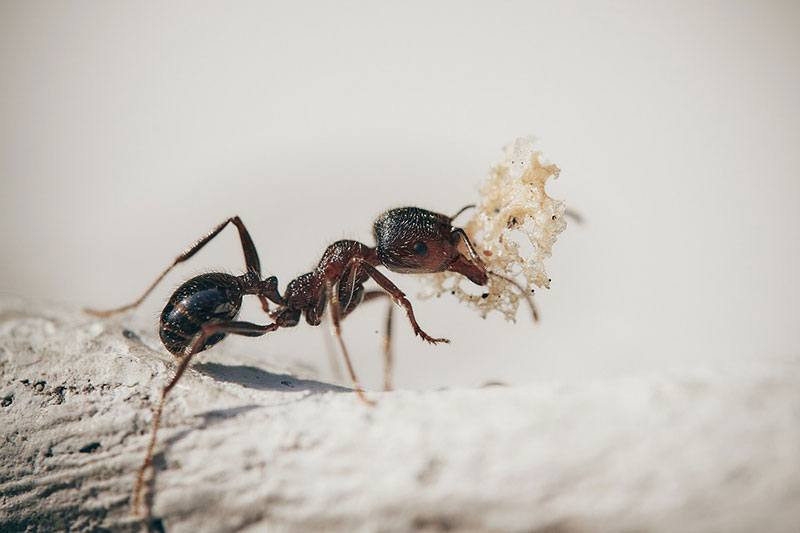
Ants Have 2 Stomachs
Unlike a lot of other animals, ants have 2 stomachs. The Mid Gut (personal stomach) is where they store their foraged food for themselves. The Crop (social stomach) is where they store food to be shared with other ants that remain in the colony to tend to their queen.
The liquid, digested only to a limited extent while held in the crop, is freely passed from one ant to another. Thus the crops of all the workers taken together serve as a social stomach from which the colony as a whole draws nourishment.
https://www.antwiki.org/
The Collective Brains Of 40,000 Ants Is Equal To 1 Human Brain
It is estimated that an ant brain has anywhere between 250,000-300,000 brain cells. With 40,000 ants in a colony, the collective ‘brain’ of the colony is around 100 million – as powerful as a human brain. A colony of 40,000 ants therefore collectively has the same size brain as a human.

Ants Are 25% Of The Total Animal Biomass
Ants can be found in many different habitats and climates, On average, ants occupy 15–20% of the terrestrial animal biomass, but it is tropical areas where they are especially common. In these environments, ants are responsible for monopolizing about 25% of the biodiversity in a given area.
Ants are arguably the greatest success story in the history of terrestrial metazoa. On average, ants monopolize 15–20% of the terrestrial animal biomass, and in tropical regions where ants are especially abundant, they monopolize 25% or more.
https://www.pnas.org/
The Longest Jump By An Ant Is About 4 Inches
The Harpegnathos saltator, also known as the Indian jumping ant or Jerdon’s jumping ant is an ant species found in India. They can leap vertically up to 0.8 inches high and horizontally about 3.9 inches far. They do this when alarmed with danger or when trying to catch a flying prey.
Their leaps are accomplished by synchronized abduction of the middle and hind pairs of legs. They can jump up to 2 cm high and 10 cm far. These leaps are made not only to escape, but also to catch flying prey. The workers forage only during the cool hours of the morning and afternoon with a lull in activity during midday.
https://en.wikipedia.org/
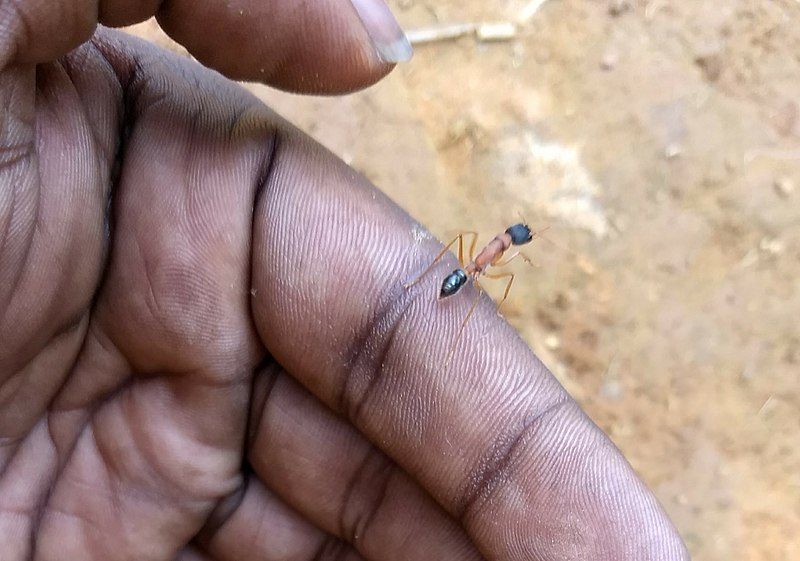
About 6% Of All Known Ant Species Worldwide Live In The US
Of the 12,000 plus ant species in the world, there are 792 ant species that reside in the US, with Hawaii having a separate list. Ants are one of the most common insects in the United States and are found in almost every state.
Of the 700+ Ant Species In The US, Only 3 Invade Homes
There are hundreds of ant species in the United States, although less than 50 species invade US homes. The top 3 ant species that commonly invade US homes include the Carpenter Ants (66%), Odorous Ants (62%) and the Pavement Ants (59%).
The Most Destructive Ant Costs $5 Billion A Year
The RIFA or Red Imported Fire Ant is the most destructive ant in the US. The FDA has estimated that it costs $5 billion in damage annually. These include stings, bites, property damage, and pest control. The ants are mainly found in the southern states and are believed to have been introduced to the US from Central America.

54 in 100 Homeowners Surveyed Say Ants Are Their No. 1 Concern
Ants are a major pest in the United States. 54% of those surveyed by the National Pest Management Association answered ants as their main problem. These pests can cause damage to homes by chewing on wood and other materials, which can lead to structural damage.
Ants: The Number 1 Pest in the U.S. , 54 in 100 homeowners surveyed by NPMA* in 2011 say that ants is their number one concern.**
https://www.preventivepestcontrol.com
Top 7 Structures Prone to Ant Invasions
- Office Buildings – 88%
- Restaurants – 83%
- Apartments and Condominiums – 82%
- Single Family Homes – 80%
- Nursing Homes – 70%
- Schools – 58%
- College Dorms – 34%
Top 7 Home Areas Vulnerable to Ant Infestation
- Kitchens – 96%
- Bathrooms – 89%
- Inside Walls – 73%
- Bedrooms – 61%
- Living Rooms – 60%
- Basements – 54%
- Air Conditioning and Heating Units – 37%
Preventive Measures To Stop Ant Infestations: 82% Are About Clearing Bushes and Greenery From The Base Of A Structure
Clearing bushes and greenery from the base of a structure (82%) is the most popular preventive measure for ant infestations. Other commonly used tips include cleaning up food crumbs and spills as you go (81%), managing moisture (78%), and sealing small cracks and openings (73%).

67% More Ant Related Service Calls Happen During Summer
As the weather starts to warm up, ants swarm homes and other buildings in search of food, water and shelter. Pest professionals experience a 67% surge in ant-related service calls during this season. Only a few 14% of people stated that ants are a year-round problem.
Ants Are 33% More Productive At 32°C Warm Conditions
A study looked into the effects of temperature on the movement and speed of ants. Researchers found that ants move more quickly in the warmer conditions. Their harvesting rate was 33% higher as the workers walked at a quicker pace of 2.85 centimeters per second on average.
The World’s Most Dangerous Ant Can Kill Humans In 15 Minutes
The Myrmecia pyriformis, known as Bulldog Ants are the deadliest ants on Earth. These Australian native ants have the most toxic venom than cyanide and arsenic combined. They are known to have caused human deaths since 1931. Many of those stung have died due to anaphylactic reactions.
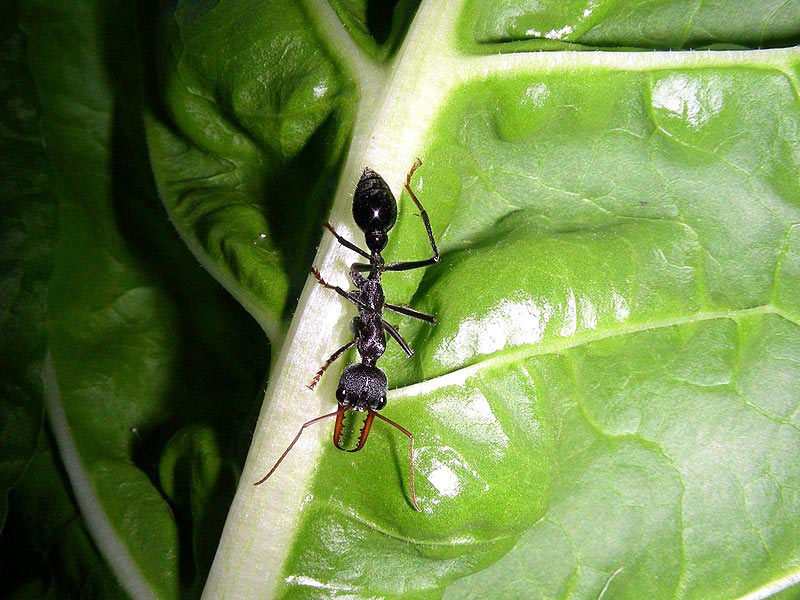
Of All Ant Species In The World Only 71% Can Sting
Today, only 71% of ant species are considered to be stinging species. Ants have evolved over time and lost the ability to sting because of the environment they live in. The evolution of these ants has helped them adapt to their habitats in order to survive.
Ants Rank The Highest Score Of 4.0+ In Schmidt Pain Index
The sting of the Bullet Ant is ranked as level 4, the highest in the four-point Schmidt Sting Pain Index. The sting from the Bullet ant was so intense that the entomologist described it as being “like walking on burning coal with a 3 inch nail nailed in your heel”.
When I asked both scientists for the worst possible combination, they agreed that a bullet ant to the nostril would probably top the chart for intensity. Schmidt gave the bullet ant a 4 out of 4 on his index and describes the sting as “like walking over flaming charcoal with a three-inch nail embedded in your heel.”
Smith found that the two most painful places to be stung are the nostril and the upper lip, followed by the penis shaft. The penis got more attention in press coverage, but Smith says “the nostril is really where it’s at.” And it makes sense that bees often target the nose, along with the mouth and eyes—they’re crucial to breathing and vision. “Pain isn’t for nothing,” Smith says; it motivates us to protect our vital functions.
https://www.nationalgeographic.com/
14 States In The US Are Predominantly Home To The Red Imported Fire Ants
The RIFA or Red Imported Fire Ants are predominately seen in 14 states in the US: Alabama, Arkansas, California, Florida, Georgia, Louisiana, Mississippi, New Mexico, North Carolina, Oklahoma, South Carolina, Tennessee, Texas, and Virginia. The RIFA is expected to spread over 10 years and eventually reach California, progressing inland as it heads towards the Pacific coastline.
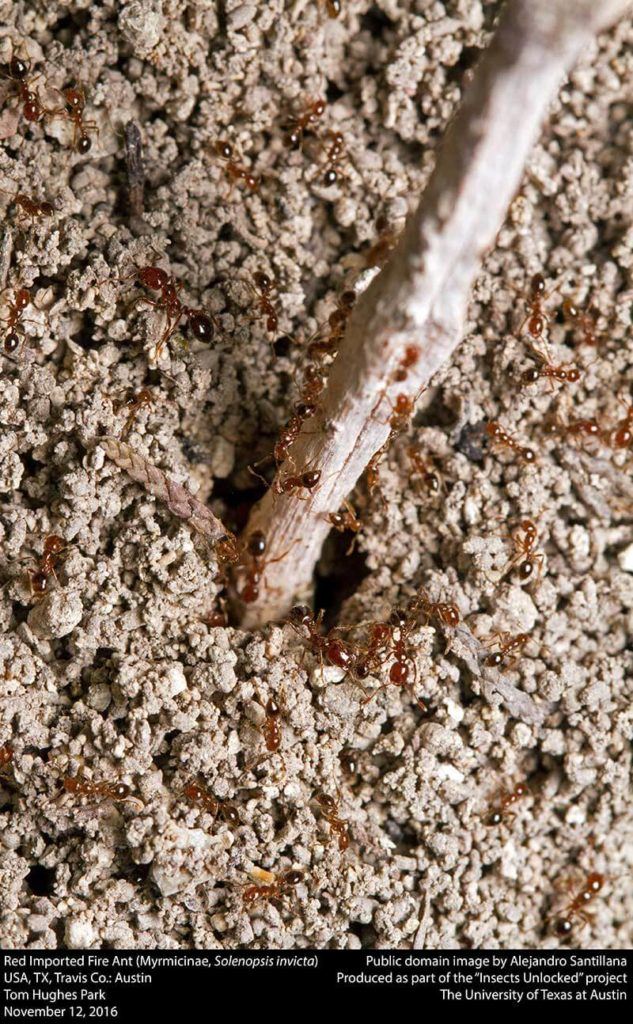
More Than 14 Million People In The US Are Stung By Fire Ants Each Year
Fire ants pose a life-threatening risk in the United States. More than 14 million people are stung each year, with 100,000 of them seeking medical attention. More than 80 people have died as a result of their high sensitivity to their venom. In urban areas of the Southeast USA, 40% of the population are stung by fire ants each year.
29,300 Physicians Surveyed: 83 Fatalities Reported Were From Fire Ant Bites
The American Academy of Allergy and Immunology surveyed over 29,300 physicians and found there was an alarming 83 fatalities, and 2 near-fatal incidents with fire ant stings. The majority of anaphylactic deaths were reported from Florida (22) and Texas (19).
An Ant Will Sting Repeatedly At An Average Of 8x In The Same Bite Area
Some ants have the responsibility of scouting for possible threats to their colony. If they sense a threat, they send out a message to warn the colony and they will swarm angrily onto the aggressor. Once an ant has bitten its perceived enemy, it typically continues to sting 7-8 times in that area before moving on.

Fire Ant Venom Is 95% Water-Insoluble Alkaloid
Fire ants are aggressive and can attack on a whim. Their venom is 95% water-insoluble alkaloid and 5% aqueous protein solution. The local reactions of the fire ant sting can cause anaphylaxis, which is a response to the aqueous protein solution. Injections of epinephrine and antihistamines may be administered to treat an allergic reaction. However, if untreated or left untreated, severe symptoms may develop and can lead to death.
1 In 100 Will Have Serious Ant Bite Reactions
The pain from an ant bite can typically stop in around 24-72 hours, but the itch may last for up to a week. It’s important to know that as many as 1 in 100 people may have serious systemic allergic reactions to ant bites that, if left untreated could lead to a fatal anaphylactic shock.
2 Out Of 46 People Develop PTSD 30 Days After A Fire Ant Sting
Studies found that 2 out of 46 people develop PTSD symptoms 30 days after a fire ant sting. The study showed evidence that the time participants were stung and their risk for developing PTSD symptoms increased as time elapsed.
24 Hour Fire Ant Bite Skin Reactions
- 0 Hours – severe burning sensation
- 2 Hours – red swollen mark about 10 cm in diameter
- 4 Hours – blisters are formed
- 24 Hours – sterile pustules develop
$35 To $100 Per Kilo: Price Of Ant Egg Caviar From Velvety Tree Ant Larvae
Ant egg caviar popularly known as “Escamoles” is a Mexican delicacy that’s grown in the best conditions—high in elevation and nestled in the branches of oak and pine trees. Ant egg caviar is sold at prices ranging from $35 to up to $100 per kilo.

Concluding this Stats and Facts About Ants Publication
I sincerely hope you enjoyed this colossal ‘ant stats’ and ‘ant facts’ post that we put together. We really enjoyed researching and writing this one. If you found any part of it useful, feel free to share via social media or any other way. We really appreciate it!
